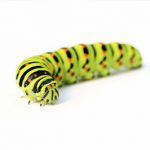 Based in the UK, The Royal Mint is actually the world’s leading exporting mint. Not only do they produce all the coinage for England and Great Britain, they also produce military medals, commemorative medals, and other such items for governments, schools, and businesses. Using their centuries of experience, The Royal Mint meticulously strikes uncirculated commemorative coins according to three finishing standards: Bullion, Brilliant Uncirculated, and Proof.
Based in the UK, The Royal Mint is actually the world’s leading exporting mint. Not only do they produce all the coinage for England and Great Britain, they also produce military medals, commemorative medals, and other such items for governments, schools, and businesses. Using their centuries of experience, The Royal Mint meticulously strikes uncirculated commemorative coins according to three finishing standards: Bullion, Brilliant Uncirculated, and Proof.
Bullion
Since bullion coins are considered to be more of a commodity, rather than an art form, The Royal Mint considers the Bullion finish to be the most efficient and standardized – and it has to be, since the demand for bullion coins is higher than others. While a Bullion finish is not breathtakingly beautiful, it does allow the mint to strike about 250 gold coins per hour without the added costs of meeting Brilliant Uncirculated and Proof standards.
Brilliant Uncirculated
The dies used to strike Brilliant Uncirculated (Also referred to as “BU” or “B.UNC.”) coins are polished and finished by hand. BU blanks are machine-fed into the coin press, struck twice to give more definition to the design, then given a consistent polish. The extra attention to detail creates quality coins at the cost of quantity – producing only about 100 coins per hour.
Proof
Proof coins from The Royal Mint represent the pinnacle of sharpness, detail, and quality in the numismatic world. Blanks destined for the Proof treatment are of higher quality than BU and bullion blanks. They are hand-fed to a coin press that uses hand-made dies – all of which are crafted and inspected by masters to ensure all imperfections are removed. Proof coins are struck six times, using less pressure and speed than other finishes to make the coin’s design extremely vivid, capturing every detail. To ensure a flawless strike on every coin, Proof dies are re-worked and re-polished every few hundred coins.
Immediately after striking, the coin is manually inspected and the die is cleaned in preparation for the next coin. The coin then receives a customized polish. The design on the coin is sand blasted to create a frosted effect, while the background gets a standard polish. The contrasting polish jobs make the design on the coin really pop. Since the process for Proof coins is so labor intensive, the mint can only produce about 50 per hour – making them rare and expensive, but centerpiece-worthy in any collection.











